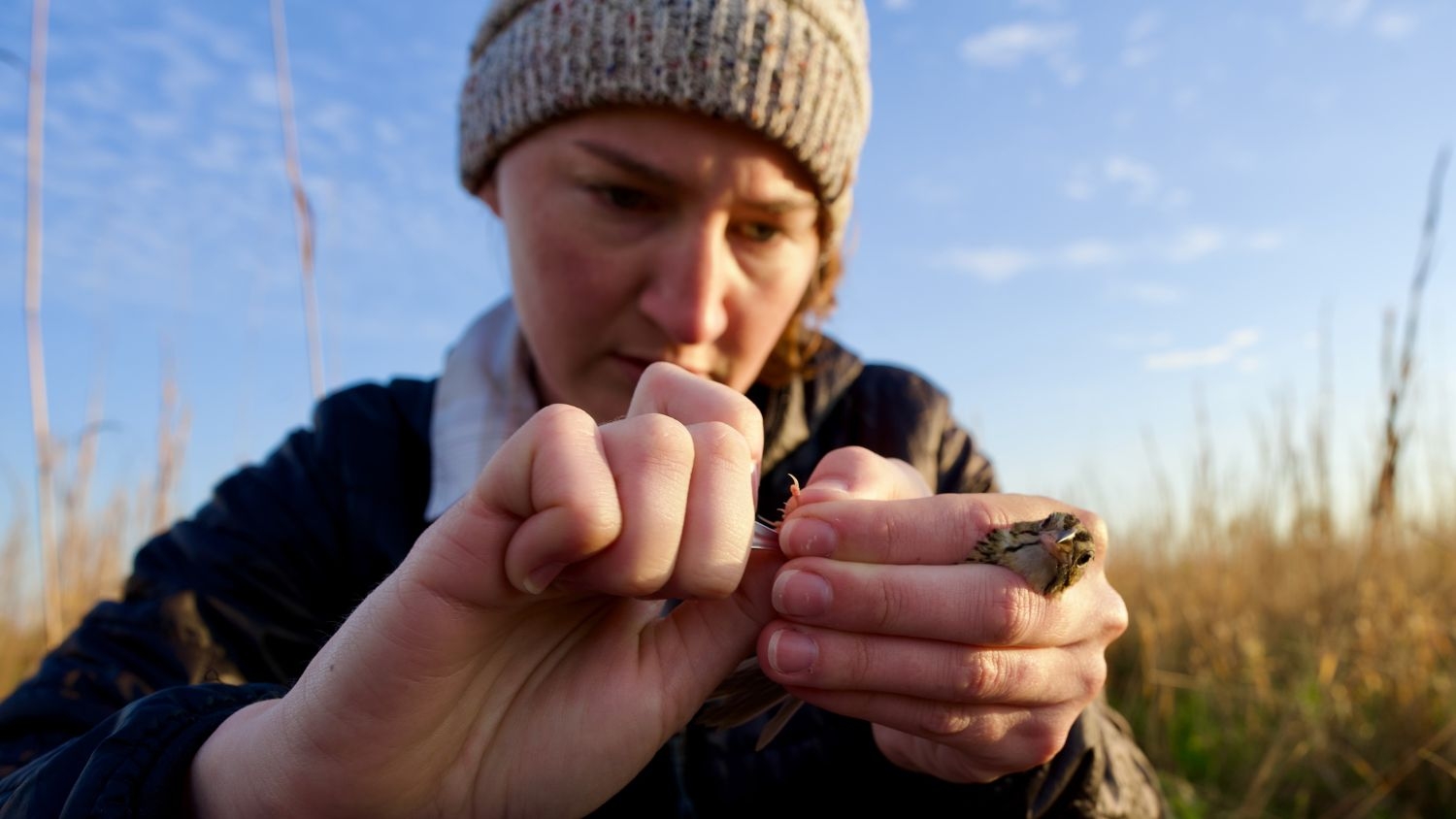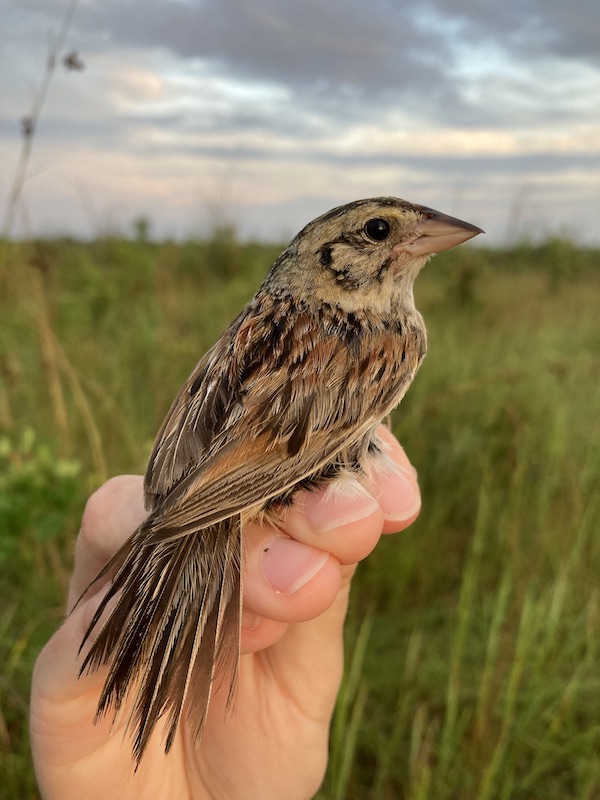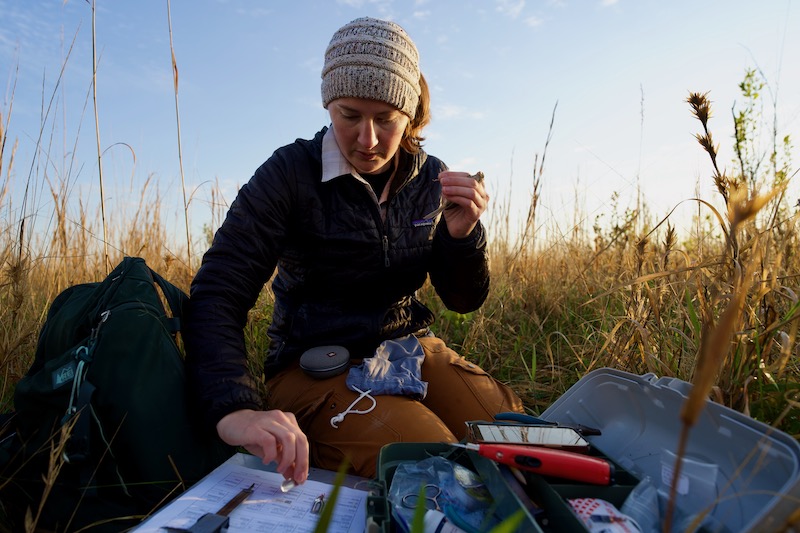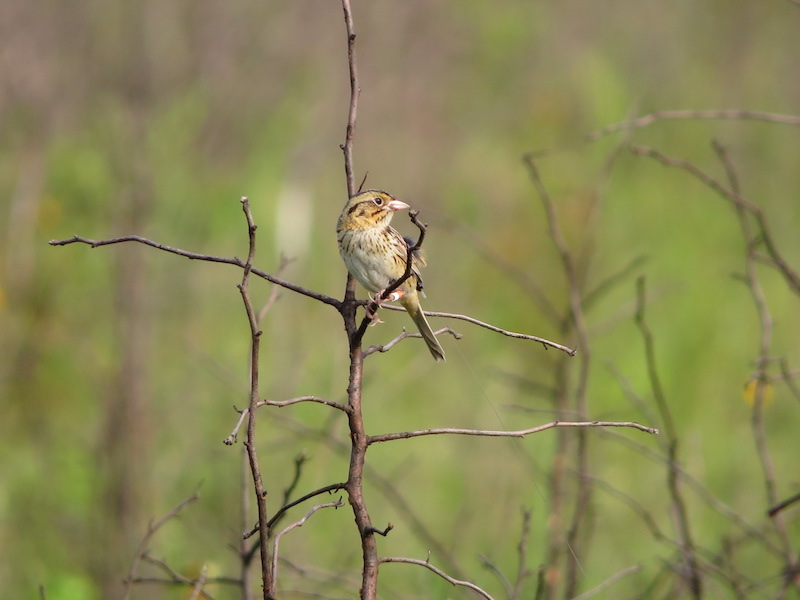CALS Graduate Student Studies Tiny Bird Species

Each summer, two swaths of land near Greenville, North Carolina, are visited by small but mighty guests. Henslow’s Sparrows travel from their wintering grounds along the Gulf Coast to visit the Voice of America sites to breed.
“To our knowledge, these are the only places these birds come to in the summer in this state,” says Emily Nastase, a doctoral student in the Department of Applied Ecology who spent the summer studying the species. “Normally, they would go up through the Midwest, so you’ll find populations of them in Ohio, Indiana and other states in that direction. These North Carolina birds are fairly isolated from the rest of the breeding populations.”
Nastase conducts her research at the Voice of America Game Land, which is owned by the North Carolina Wildlife Resources Commission (NCWRC), and her project is housed in the North Carolina Cooperative Fish and Wildlife Research Unit, a partnership between the Department of the Interior’s U.S. Geological Survey and U.S. Fish and Wildlife Service, NCWRC, North Carolina State University, and the Wildlife Management Institute.

“They asked us to help them understand why these sparrows are coming to this particular site and how they can manage this property to make sure that they keep coming back,” Nastase explains.
The research is essential with populations dwindling nationwide, threatening the biodiversity in grassland habitats.
“Climate change is going to play a big part in all of this because we are rapidly losing these types of habitats, whether they’re disappearing or becoming overgrown,” Nastase says. “So one day, a species like the Henslow’s Sparrow may not have breeding habitats to come back to.”
Nastase, who was also a 2022 Global Change Fellow with the Southeast Climate Adaptation Science Center, first discovered her passion for birds while in art school at Virginia Commonwealth University. While enrolled in the scientific illustration program, she went on a study abroad trip to study migratory birds in the Tropics.
“I realized pretty quickly that I really liked learning about biology and ecology and being in nature,” Nastase remembers. “I was already on track to get a biology minor with the scientific illustration program, but I decided I didn’t want to miss the opportunity to pursue science as well. That was the moment I decided I wanted to double major and explore my options a little bit.”

After graduation, Nastase worked as a science communicator at the University of Maryland Center for Environmental Science, but she missed doing research. She decided to explore graduate programs, eventually landing at NC State.
“I think three or four people suggested I look at NC State. My officemate at the time said, ‘Yeah, if you like birds and you’re interested in NC State, you should check out Jaime Collazo. He’s a researcher at NC State who studies birds in the Tropics.’”
Nastase started a master’s degree program with Collazo in 2020, and she liked the project so much that she transitioned to a doctoral program instead.
Her project focuses on assessing the population size and the growth rate of Henslow’s Sparrows at the Voice of America Game Land. There, she monitors sparrow habitat use, genetics and breeding success using tools like radio tagging and acoustic monitoring.

“When you put all that information together, you can run models to see if the population will do well into the future,” she says.
Last summer, Nastase completed her third and final season of fieldwork, and now, she’s analyzing results. So far, her data shows that the population is increasing dramatically year to year, but there are several factors to consider.
“We’re estimating that population growth rate to be around 15% annually, which is a big deal for any study species, but especially for a threatened songbird,” Nastase shares. “They seem like they’re doing pretty well at this site.”
Nastase also found that the birds don’t seem to mind the prescribed burn strategy at the property.
“I’ve never been as passionate about another study species before.”
“From what we can tell, it looks like the birds seem to prefer the areas that were burned two years prior,” she says. “It’s sort of a sweet spot, so we think the birds are moving around within the site based on when it was burned. It seems that they are responding positively to the fire management at the property.”
Through lots of hours of fieldwork, Nastase has become passionate about Henslow’s Sparrows despite initially wanting to study tropical birds.
“People discredit sparrows all the time,” she says. “They think they’re just a small brown bird and that they’re not that cool. But when you sit there, and you spend hours each week watching them, you realize they have so much spunk and so much energy. I’ve never been as passionate about another study species before.”
This post was originally published in College of Agriculture and Life Sciences News.


